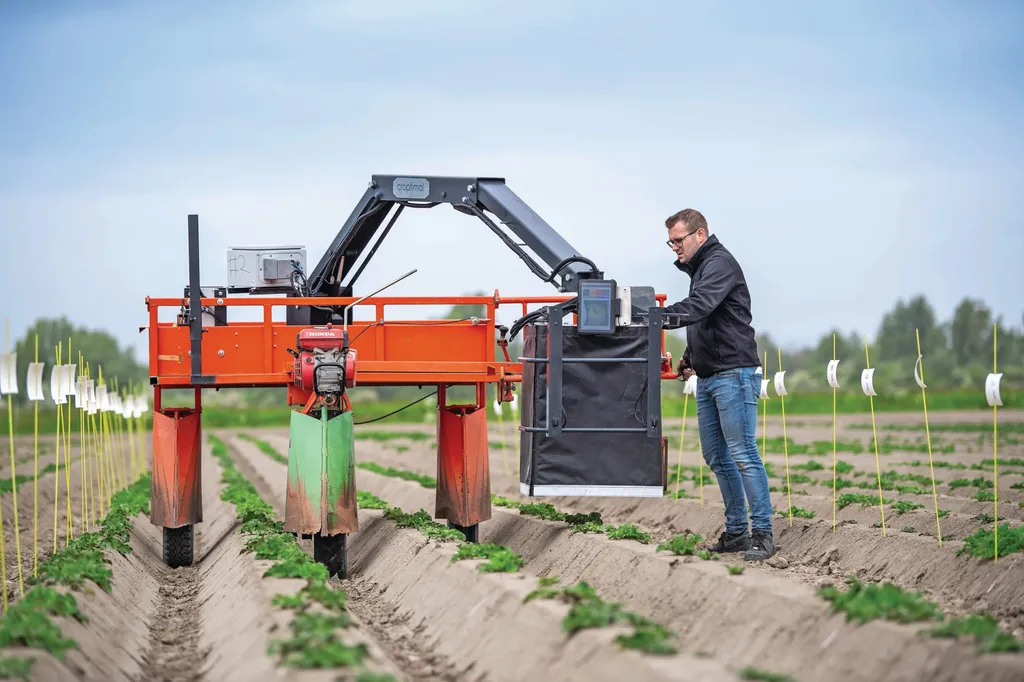In the heart of the Netherlands, a quiet revolution is taking root, one that promises to reshape the way potato farmers approach disease management. H2L Robotics, a name synonymous with innovation in the tulip industry, is set to bring its first eight units of the PotatoSelector300 into practical application next year. This fully autonomous selection robot, designed to mark diseased plants, is poised to bring a new level of precision and efficiency to potato farming.
H2L Robotics has already made waves in the Netherlands with its Selector robots for disease scouting in tulips, with 100 units currently in operation. The PotatoSelector300, while partly based on the technology of its tulip counterpart, is a completely new vehicle tailored to the unique needs of potato farming. The robot’s secret lies in its smart software, which is capable of recognizing diseased or deviating potatoes with remarkable accuracy.
This season, two prototypes of the PotatoSelector300 have been hard at work in Dutch potato fields. Their primary mission was to collect images to train the software, but they also demonstrated their selection capabilities. Aard Duivenvoorden, operations manager at H2L Robotics, shared that the prototypes have been instrumental in gathering the data needed to refine the robot’s algorithms. Next year, eight more definitive versions of the PotatoSelector300 will be built and deployed at eight different growers’ fields.
The robot’s algorithms are currently ready to detect Y-virus leaf roll and Erwinia in Spunta and Fontane varieties. However, the development doesn’t stop there. Work is ongoing to expand the robot’s capabilities to other varieties, with the ultimate goal of being able to select all potato varieties.
The PotatoSelector300’s journey began last season on the trial fields of WUR Open Crops in Lelystad. Here, it was tested and trained on multiple varieties, collecting large amounts of data that serve as input for its image recognition system. The robot operates with an enclosed, illuminated cover that ensures constant light conditions, allowing it to work around the clock, unmanned.
Unlike the tulip robot, which runs on tracks, the PotatoSelector300 runs on wheels. Two large driven wheels at the front and two small caster wheels at the rear propel the 4-row machine at a driving speed of around 3 kilometres per hour. The robot’s diesel-electric drive system powers a generator that supplies electricity to the electric motors. Once the robot identifies a diseased potato, it sprays it with chalk paint, similar to the paint used for line marking on sports fields. The removal of the marked plants then takes place separately by hand.
The development of the PotatoSelector300 is a testament to the power of collaboration. Under the umbrella of the public-private project Agros II, H2L Robotics has joined forces with WUR and Kverneland to bring this innovative solution to life. H2L Robotics is responsible for building and supplying the PotatoSelector300 and providing technical support. While the price of the selection robot is not yet known, it’s clear that the investment could pay off in the form of improved disease management and increased yields.
As the PotatoSelector300 prepares to make its debut in potato fields across the Netherlands, it’s clear that the future of farming is here. This autonomous robot represents a significant step forward in precision agriculture, offering a glimpse into a world where technology and farming intersect to create more efficient, sustainable, and productive practices. For potato farmers, the PotatoSelector300 could be a game-changer, heralding a new era of disease management and crop health.

